Brisket & Beyond Blog
Thoughts on the Israeli-Hamas War
10/18/2023 12:19:54 PM
SW
| Author | |
| Date Added |
We asked if anyone wanted to share their thoughts on the on-going war between Israel and Hamas. Here is a response we received.:
Thoughts on the Israel-Hamas War
When the radio woke me up on Shabbat morning on Oct. 7, the first thig I heard was the announcer playing Netanyahu saying “THIS IS WAR!”. I thought I was still asleep or having a nightmare. I had skyped with my sister and brother-in-law on Friday to say Shabbat shalom. They had fulfilled their lifelong dream of living in Jerusalem last December. Their son, my nephew Ami and his family have lived there for over 20 years. On Thursday, I had spoken to Ami, and his son Yair (who had just finished his active service in the army and was now completing his associated Yeshiva studies) about how to facilitate their using my Amazon Prime account to order things. All was well, I must have mis-heard! Sadly, I had not!
I began to hear from friends and family asking if I had heard anything, was everyone okay? But of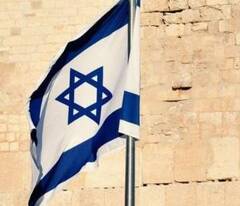 course, I had heard nothing – it was Shabbat and Shemini Atzeret; They were not going to call… Turning on the TV and looking at the Times of Israel site did not help. The horror stories unfolding there just ramped up the fear and anxiety. And also ramped up my anger. Here we go again, still fighting the same war after 75 years. But this time it is worse because I have dearly loved relatives involved in the fighting.
course, I had heard nothing – it was Shabbat and Shemini Atzeret; They were not going to call… Turning on the TV and looking at the Times of Israel site did not help. The horror stories unfolding there just ramped up the fear and anxiety. And also ramped up my anger. Here we go again, still fighting the same war after 75 years. But this time it is worse because I have dearly loved relatives involved in the fighting.
I finally heard from my sister on Sunday. They were all okay at that moment, but Yair, who is a medic, was recalled to active service immediately. I believe, he is now patrolling somewhere along the northern border which I devoutly pray remains quiet. Now, every morning I get up afraid of what I may hear has happened overnight. I am trying very hard not to wallow in the news broadcasts.
I am grateful that at least for now, America and the EU have been greatly supportive of Israel’s need to respond and respond forcefully to this unbelievably heinous attack. But I fear that as the war rages on and the casualties continue to mount that pressure will come to bear on Israel to stop before the job is done. I fear this war may escalate further. I continue to fear for the safety of my family and friends that live in Israel, for the lives of the hostages, for all the soldiers in the IDF, and for the entire State of Israel.
I am sad to say, that my sympathies for the “innocent” citizens of Gaza trapped in that hell-hole is limited. There could have been a Palestinian state many times in the last 75 years; Hamas which was always a terrorist entity bent on death and destruction did not have to be voted into power in Gaza. Generations of children did not have to be brought up to know only hate. The barbarism of this totally unnecessary war has pushed Israel (and me) into a position of needing to act with less concern than all of us want to feel for the terrible plight of those people. I am reminded of a quote I heard years ago from Golda Meir.
“When peace comes we will perhaps in time be able to forgive the Arabs for killing our sons, but it will be harder for us to forgive them for having forced us to kill their sons.” ― Golda Meir, A Land of Our Own: An Oral Autobiography
I stand with Israel; I pray for Israel; I donate my money to help Israel. I fear, but I am also confident that Israel has the ability and the will to do what needs to be done and will win this war. And lastly, I plan to spend next Pesach with my family in Jerusalem. Am Yisrael Chai!
CBM Showed Up for Fall Fix Up!
11/11/2022 11:48:20 AM
Shana Kantor
| Author | |
| Date Added |
B'nai Moshe had a great showing at the Jewish Family Service Fall Fix Up program! Twelve members came together on Sunday, November 6 to volunteer and do a mitzvah for people in need.
Twelve members came together on Sunday, November 6 to volunteer and do a mitzvah for people in need.
The purpose of Fall Fix Up is to spend the day raking leaves, winterizing windows, and cleaning yards for community members who do not have the physical ability to do these things themselves, nor the financial resources to pay others.
B’nai Moshe members split up and used their time to volunteer at two different homes. It was a morning well spent, and the volunteers left with sense of accomplishment!
CBM's own Hannah Fine on Channel 7!
08/22/2022 12:40:11 PM
B'nai Moshe
| Author | |
| Date Added |
As part of the 6th annual Hazon Jewish Food Festival, held on Sunday, August 21 at DNR Outdoor Aventure Center on the riverfront, Hannah Fine (a B'nai Moshe board of directors member) was featured on channel 7 showing how to pickle.
As an Adamah Apprentice at the Isabella Freedman Jwewish Retreat Center in Falls Village, CT., Hannah is excited to get her hands dirty, reestablish a physical connection to the earth, and continue exploring the intersections of food, justice, and Judaism. Hannah comes to the apprenticeship after 3+ years on the Hazon Detroit team where she also served as a JOFEE (Jewish, Outdoor, Food, Farming, and Environmental Education) Fellow. A transplant to Detroit from the suburbs, Hannah is energized and inspired by the city’s deep sense of community, especially as it relates to building resilience around food and land. She is excited to bring that with her to Adamah.
Click Here to Watch Hannah's Segment

B'nai Moshe Proud of its Yad Ezra Volunteers
06/22/2022 01:14:55 PM
B'nai Moshe
| Author | |
| Date Added |
 Were you aware that B'nai Moshe regularly has enough volunteers at Yad Ezra to have a minyan? As part of our mission to make the world a better place these special people walk the walk. This is a picture of who was volunteering today.
Were you aware that B'nai Moshe regularly has enough volunteers at Yad Ezra to have a minyan? As part of our mission to make the world a better place these special people walk the walk. This is a picture of who was volunteering today.
Pictured are Shane Sperling, Alan Hitsky, Pat Levine, Judy Pasternak, Jerry Cohn, Cynthia Zucker, Marc Sussman and Arthur Weinfeld.
Not pictured but regular volunteers are Mel Hersh, Bert Stein and Bernie Jonas. Yasher koach to each and every one of you.
B'nai Moshe takes Eastern Market Tour
05/02/2022 11:04:15 AM
B'nai Moshe
| Author | |
| Date Added |
On Sunday, May 1, B'nai Moshe members and friends joined Linda Yellin of "Feet on the Street" for a fantastic tour of street art, graffiti and murals at Eastern Market. The group began at at Signal Return - a printer's co-op in the Eastern Market and got a tour from our own Lynne Avadenka, who is the Artist Director. Here you can find Find letterpress posters, handmade postcards and more.
Eastern Market is a small neighborhood just north of Downtown Detroit and Ford Field that hosts a farmer’s market every Saturday (the longest-running year-round farmer’s market in the country). In 1969, an artist commissioned the neighborhood’s first murals, and the Detroit street art scene here blossomed since. In just the last six years, more than 100 new murals have been added, thanks to the organization Murals in the Market.
Don’t leave finding street art during your Detroit trip to chance; head over to Eastern Market and see this vibrant street art scene for yourself.
In Michigan, Detroit street art brings a vibrant, gritty city to life. Eastern Market murals, especially, are a must-do in Detroit. Click through to learn about Detroit's highest concentration of street art!
All you need to do to find the Eastern Market murals is open your eyes—it’s literally impossible not to find this Detroit street art. Murals are painted on just about every vertical surface, from walls of wholesale meat markets to abandoned, crumbling buildings.
Detroit street art brings a vibrant, gritty city to life. Eastern Market murals, especially, are a must-do in Detroit. Click through to learn about Detroit's highest concentration of street art! Detroit street art brings a vibrant, gritty city to life. Eastern Market murals, especially, are a must-do in Detroit.
One of the reasons Eastern Market is a must-do activity in Detroit is the concentration of amazing murals here. You can’t walk a block without coming upon a remarkable piece of public art—or several!
What’s more, the number of Eastern Market murals grows every year. The annual Murals in the Market festival, which happens every September, combines murals with a block party-like series of events to celebrate this uniquely Detroit neighborhood.
In fact, Smithsonian Magazine named Murals in the Market one of the best street art festivals around the globe (and was the only one in the US).
B'nai Moshe Supports Afghan Refugees
04/06/2022 05:06:51 PM
Rena Kirshenbaum
| Author | |
| Date Added |
On March 5, B’nai Moshe took part in a community wide HIAS refugee awareness shabbat. We heard the story of Jennie Mizrahi Lieberman, who as a young girl and a Cuban refugee, was helped by HIAS to settle with her family in the US.
To help the refugee cause, B’nai Moshe launched, with the help of Jewish Family Services of Ann Arbor, a project to fill 55 new backpacks with school supplies for refugee children being settled in Washtenaw County. Through a registry set up on Amazon as well as monetary donations, the entranceway to B’nai Moshe began to fill up with over $4,000 worth of school supplies.
On Sunday, March 13, volunteers came together to sort and pack up the backpacks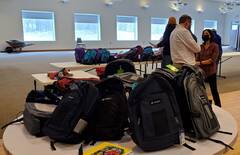 with supplies and a few treats. These backpacks were delivered to JFS in Ann Arbor where they will make their way into the hands of refugee children from kindergarten to high school.
with supplies and a few treats. These backpacks were delivered to JFS in Ann Arbor where they will make their way into the hands of refugee children from kindergarten to high school.
While these backpacks cannot address all the challenges of being a refugee, perhaps they will lighten someone’s load a little and put a smile on the face of a child. We also hope this will not be the end of our support for refugees as we look for more ways to have a positive impact.
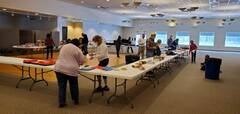 The number of families leaving everything familiar behind and starting a completely new life will only continue to rise for the foreseeable future. Settling these families and helping them to transition takes a village. Please stay informed and reach out to HIAS, JFS or any other organizations working tirelessly to help those arriving to a place they hope to call home.
The number of families leaving everything familiar behind and starting a completely new life will only continue to rise for the foreseeable future. Settling these families and helping them to transition takes a village. Please stay informed and reach out to HIAS, JFS or any other organizations working tirelessly to help those arriving to a place they hope to call home.
Rain Doesn't Dampen Our Chanukah Spirit
12/13/2021 10:10:13 AM
B'nai Moshe
| Author | |
| Date Added |
On Sunday, December 5 the Conservative Community met to celebrate Chanukah as one. We were prepared for the possibility of cold temperatures and/or snow. This is Michigan, after all. What we didn't expect was a driving rain, however we didn't let that dampen our spirits.
One of the highlights of the celebration was to be the lighting of B'nai Moshe's giant Chanukiah and a parade to Jewish Senior Life Apartments where we would sing and dance with our friends there. However the rain made that an impossible task.
Every car that showed up received a large pizza from Jerusalem Pizza and donuts from Dunkin' donuts. There were hot and cold beverages for everyone and warming stations for those who needed to warm up a little.
We got a wonderful visit from Michigan's Governor Gretchen Whitmer who spoke and stayed to take pictures in the rain with so many people.
This was our first foray into such an event and even with the rain, those who came absolutely loved it! We look forward to doing this again next year. Hopefully with no rain!
Agi and Zoli: A Love Story
12/08/2021 04:41:03 PM
Arnie Goldman
| Author | |
| Date Added |
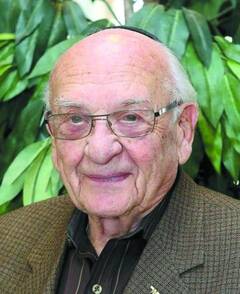 We lost a great man on Shabbat Chanukkah. Zoli Rubin passed away after 103 1/2 years, even more amazing for a Holocaust survivor, leaving a phenomenal legacy. Judy and I were fortunate to visit Zoli and Agi's home over 10 years ago and I wrote this article in celebration of their 60th Wedding Anniversary for the Detroit Jewish News. I can honestly say to those who knew him, Zoli will never be forgotten.
We lost a great man on Shabbat Chanukkah. Zoli Rubin passed away after 103 1/2 years, even more amazing for a Holocaust survivor, leaving a phenomenal legacy. Judy and I were fortunate to visit Zoli and Agi's home over 10 years ago and I wrote this article in celebration of their 60th Wedding Anniversary for the Detroit Jewish News. I can honestly say to those who knew him, Zoli will never be forgotten.
~ ~ ~ ~ ~
“We survivors are bundles of contradictions,” Agi Rubin wrote in her 2006 book, Reflections, Auschwitz, Memory, and a Life Recreated, (written with Henry Greenspan, Paragon Books). “We push away the past, and we are constantly drawn back to it. When we are here, we are also there. And we are there, we are also here.”
Agi and Zoli Rubin are two survivors still able to share their past tragedies and the memories of their departed loved ones. They survived completely different horrors during World War II, met in Detroit, fell in love against the wishes of their families, and raised a family.
 Though they never forgot their pasts, they were able to prosper in America, forever haunted by their losses, yet always grateful they were given a chance to meet each other and live nearly 60 years together.
Though they never forgot their pasts, they were able to prosper in America, forever haunted by their losses, yet always grateful they were given a chance to meet each other and live nearly 60 years together.
It may be rare to witness such a Holocaust love story, one that has lasted as long as this one. On August 18, 2011, Agi and Zoli Rubin plan to celebrate their 60th wedding anniversary.
Agi Katz and Zoli Rubin met in Detroit after World War II. Zoli saw Agi at a party and thought she was too stuck up for him. Weeks later, Zoli saw her again outside Hudson’s Downtown store, eating a hot dog with mustard dripping off her lips and said to himself, “she is going to be my wife.”
Zoli, who had immigrated to Canada thanks to a farmer who had once been helped by Zoli’s father, had been engaged twice before but had not married. Agi, he thought, was good looking but she already had a boy friend from Ann Arbor. When she and her boyfriend and Zoli were invited to the same wedding, Agi decided not to go, unable to decide between the two young men. Her boyfriend met Zoli at the wedding and called Agi afterward to come over her house. Zoli couldn’t believe her boyfriend’s chutzpah and Agi was also not impressed either and chose the Canadian.
It was hard to find work after the war but Zoli finally found a job at the Midwest Woolen Co. on Randolph Street. The owner gave him $50 the first day when he showed the owner what a hard worker he was. And when they needed a cashier, Zoli told his boss about Agi and she was hired right away.
Zoli wanted to propose to Agi. If he could marry an American, he thought, he would have an easier time becoming an American citizen. Today, Zoli Rubin still calls his wife of nearly 60 years his “green card.”
 When they eventually engaged, Agi and Zoli both got letters from their closest relatives, questioning their decisions and telling each of them to look for someone wealthier.
When they eventually engaged, Agi and Zoli both got letters from their closest relatives, questioning their decisions and telling each of them to look for someone wealthier.
They never listened to their families’ requests and finally got married in Detroit on August 18, 1951.
Agi and Zoli Rubin didn’t talk much about their history for much of their married life together. However, they courageously volunteered to talk about their pasts for the Voice/Vision Holocaust Survivor Oral History, Zoli in January 1983 and Agi in December 1984. (Both can be found online at http://holocaust.umd.umich.edu/).
Zoltan was the youngest of eleven children, including his eight brothers and three sisters. In the interview, he fondly spoke about the “small village” of about 25,000 people in Czechoslovakia where he grew up. His father, a very “religious man,” ran a flourishing large farm, flour mill, and saw mill while his brother ran a chemical factory which produced toothpaste and prescription drugs. Like Abraham, Zoltan’s father kept his doors open for everyone, for people to pray in his house. And his father would always buy something from a traveling salesman because “this is his bread,” advice Zoli followed years later in his own business.
The youngest child of the Rubin family admitted he had an idyllic, nice childhood, a Jewish life with “all the freedom we wanted.” He remembered the last Seder in his home, a beautiful, sad, distant memory. “There must have been at least thirty-five, forty people. Somehow everybody came. It was…it was just beautiful. Kids running around, small children, big children.”
In the late 1930s, after children starting being deported, his brother was taken and then another older brother but his wealthy parents were considered “important” and exempted for awhile. Zoli was fortunate to get gentile papers from a friend from school that helped keep him alive. (Zoli still has the papers of citizenship and birth certificates from his friend who gave him gentile papers.) His parents were desperate for their youngest child to survive but they didn’t want to live under gentile papers.
When soldiers came to his house, his father told Zoli to hide in the Sukkah between the roofs and “kim nisht herinter,” (don’t come down,) were the last words he ever heard from his mother. His parents were taken to Zilina in Slovakia but this didn’t stop Zoli from trying to save them. Zoli got a letter of release and went to get money and jewels that his father gave a convert to hide for him upon his return. When Zoli went back to their house, he was told money and jewels were no longer there. He convinced one of his brothers to return to his home and search the basement when the German guard was at church. After three hours of searching behind the stones, a distraught Zoltan and his brother finally gave up.
Even without the extra money, Zoli was still able to get a release for his parents and brought it to Zilina. He heard his parents’ names called but another family was instead released as his parents had already been sent somewhere else. A man who called Zoli’s father Uncle Mendel had sent his parents away and took bribes for himself.
Rubin ended up joining the Slovak uprising to fight the evil he had witnessed. But the German soldiers captured him as well as many others and those without ID cards were instantly killed. A Slovak who knew Zoli threatened to tell on him but Zoli told him in a moment of exhaustion, “go ahead and tell them I’m Jewish.” Fortunately, the Slovak and Zoli were separated and his secret was safe.
After the Germans captured the soldiers, they forced the prisoners to march. Zoli held onto the protective socks his mother gave him before she was captured; to Zoli, these socks kept his mother close to him and helped keep him alive. Yet, when he was in the front of the line, he realized he was a “dead man walking,” along with another Slovak and three Frenchmen. Still, he knew the SS soldiers were always searching for cigarettes and would do just about anything for a smoke. So Zoli carried a box of cigarettes even though he didn’t smoke and flung them onto the ground. When the soldiers reached for them, Zoli walked gingerly back into the crowd of a couple hundred prisoners and soldiers. And when they finally arrived at the death camp, the Slovak and Frenchmen at the front of the line were shot dead. Zoli remembers thinking, “Somebody’s with me, somebody’s with me.”
Years later, Zoli’s granddaughter wrote in a school project that cigarettes are extremely deadly and yet, they helped keep her grandfather alive. Cigarettes, she wrote with astonishment, are able to take away life but at least for one moment, they were able to save a life.
After the war, Zoli and his surviving brother from Persia went back to his parents’ house and found the money he had searched for during the war within a few minutes. At that moment and for most of his life, Zoli has wondered, “Why didn’t I find it the first time I looked?” Living with this indescribable guilt that he failed to save his mother and father’s lives, he can barely stop the tears from dripping down his eyes.
It’s been almost 70 years but Zoli’s voice quivers when he speaks of the agonizing days and unbearable losses. He estimates that about 70 members of his extended family died but fortunately, he was able to save a remarkable photo album from his Czechoslovakian home and bring it to America. An amazing treasure trove of family photos and letters from his family’s past, it is a testament of a profound legacy. There are photos, still in excellent condition, of Zoli’s parents and siblings, aunts, uncles, nieces, and nephews. This is a picture book filled with memories and evidence that once upon a time in Europe, life was good.
Agi Rubin’s Holocaust experiences were very different than her husband’s. She spoke to the U of M interviewer in 1984 that her family was “fortunate” to have 15 out of 60 family members survive. But being transported from Munkacs in a cattle car to Auschwitz/Birkenau and barely existing amidst starvation, devastation, and death was anything but “fortunate.” Agi remembered when her little brother came home crying after his friend called him a “dirty Jew.” Agi said to the interviewer, “Little did he know than that that was his destiny: being a Jew at the age of six, he would be cremated.”
She reflected when she first saw the striped clothing at Auschwitz, how she and her family were lined up and shoved, heard the words, “schnell, schnell” (“fast” in German). She recalls how Josef Mengele took her from her mother, aunt, and brother and she ran back three times and “he threw me to the gravel ground….I just wanted to stay with, I felt guilt, I felt lonesome not being with her.” And after the third time she was pushed down by Mengele, “My mother went, let my child go, I’ll see you tomorrow and I remember my mother all my life with the wave of her little finger…”
In her book, Reflections: Auschwitz, Memory, and a Life Recreated, with Henry Greenspan, she writes how she was chosen to help sort the clothes of those who had been gassed and killed. Imagine a young girl having to sort the clothes of the dead rather than being killed herself. Imagine recognizing your aunt’s jacket in the leftover clothes and knowing that someone you love has just been exterminated, a few feet away. Imagine sorting the jewelry, shoes, hair, and clothing and realizing this was all that was left of her brother and mother.
Agi wrote about Birkenau in the summer of 1944, “I will never forget the sounds. There was singing, Ani Maanim, ‘I believe in the coming of the Messiah.’ There were shouts of farewell—parents saying goodbye to children, old people saying good-bye to their families, a whole community saying good-bye to life. The Sh’ma, ‘Hear, O Israel.’ The end of the Sh’ma. The end of everything. Silence screaming just as loud.
“I will never forget these sounds. They will always haunt me.”
Unlike her husband who goes every week to synagogue services, Agi rarely attends services anymore.
Agi’s father astoundingly survived the Holocaust but her mother didn’t. And so Agi ended her book, remembering her mother “as she looked across the mud and the agony, trying to get my attention, trying to imagine a future, trying to invoke hope, trying to bestow the only blessing that, in the end, this world allows:
‘Go, my child, go.’”
Agi and Zoli’s parents sent their children away to save them. Yet, Agi and Zoli’s devastating memories, their books and framed photographs, the letters and artwork saved from their childhood, still haunt them over 66 years later.
Even though tragedy brought Agi and Zoli together, they have persevered with little bitterness and anger. They know what they’ve lost but they are thankful for what the gifts of their lives have brought them.
The Rubins worked and lived in the United States in the Detroit area and started a family and made many friends in their over-60 years together. They raised three children together, Vicki, Amy, and Randy, and were fortunate to have been given seven grandchildren as well.
Agi and Zoli have lived a modest, devoted, and love-filled life for 60 years. After all those years together, they still talk and share and aren’t afraid to face the past horrors of their lives together. Zoli worries when Agi doesn’t feel well and Agi feels the same way.
Agi and Zoli’s parents, siblings, and extended family would have been very proud of the kind of lives they have lived after enduring such atrocities, the examples they have set for their children and grandchildren.
Zoli Rubin smiles when he says he will live to 100. He comes to Bnai Moshe synagogue usually for morning services on Monday and Thursday and Shabbat and often leads prayers for the service, even though he is over 90 years old. Though he lived through some of the most horrific years in Jewish history, he still believes in God and faithfully says Yahrzeits for every member of his family in loving memory.
In a world filled with cruel leaders, genocide, and anti-Semitism spreading around the globe, it is remarkable that two survivors have been together for 60 years. Agi and Zoli are a loving couple who have never given up on each other, their friends, their families, and who have never stopped believing in the potential goodness of people.
In her book, Agi remembered her father when he sang Ein Keloheinu and wrote, “Whenever I am at the synagogue, I hear his voice….I remember how much joy he got out of singing…he is again with me, and I am singing with him. It is the harmony of voices that makes the legacy, the way I tune myself to him, and feel his spirit still singing, through my own voice. Even now, we are singing together.”
Every year, we lose thousands of survivors. But we should be thankful for those who are still here to cherish. We can be inspired the way Agi and Zoli Rubin were, when remembering their mothers and fathers, hearing their spirits singing together.
Hear the harmony of Jewish voices rising above grief and loss.
Hear, O Israel.
Annen Weber To Share Her Book at JCC Summer Bash Book Fair
07/13/2021 03:30:42 PM
B'nai Moshe
| Author | |
| Date Added |
 Mazal tov to Annen Weber who has been invited to share her book Willa the Chinchilla at the JCC Detroit Jewish Book Fair Summer Bash on Sunday, August 8 from 11am - 2 pm.
Mazal tov to Annen Weber who has been invited to share her book Willa the Chinchilla at the JCC Detroit Jewish Book Fair Summer Bash on Sunday, August 8 from 11am - 2 pm.
It 's the story of what happens when you try to have someone else's cake, and eat it too!
Willa the Chinchilla lives in her chinchilla villa along with her happy human family. Every day, Willa gets a special treat - a plump, purple  raisin right from the box. But one day Willa sees her family having a party with a massive, pink, fluffy birthday cake and she decides she wants it more than anything else in the world. A massive tummy ache later, Willa has learned a lesson about what is and isn't for Chinchillas. Willa the chinchilla is a lighthearted, educational story for parents to read aloud or for early reader to explore alone.
raisin right from the box. But one day Willa sees her family having a party with a massive, pink, fluffy birthday cake and she decides she wants it more than anything else in the world. A massive tummy ache later, Willa has learned a lesson about what is and isn't for Chinchillas. Willa the chinchilla is a lighthearted, educational story for parents to read aloud or for early reader to explore alone.
The book is available on Amazon BY CLICKING HERE.
Shabbat Experience Outdoors!
05/28/2021 11:42:34 AM
B'nai Moshe
| Author | |
| Date Added |
 We know we're still several weeks away but we are just so excited we couldn't keep this quiet anymore. B'nai Moshe's critically acclaimed "Shabbat Experience" will be joining together IN-PERSON in July and August and we'll be meeting outdoors, which will enhance our experience immensely!
We know we're still several weeks away but we are just so excited we couldn't keep this quiet anymore. B'nai Moshe's critically acclaimed "Shabbat Experience" will be joining together IN-PERSON in July and August and we'll be meeting outdoors, which will enhance our experience immensely!
July 3 and 31 and August 21 are the dates you need to put on your calendar (you can do it right now, we'll wait) to join together on the grounds of B'nai Moshe to experience Shabbat and the majesty of God in nature. We will not be streaming Shabbat Experience on those days so you'll have to be here to experience it. However, if weather does not cooperate, we will be meeting in the chapel. We are asking that only people who are fully vaccinated attend the in-person sessions. We must admit that is a great reason to get vaccinated if you haven't done so already!
Of course we will still be meeting virtually via zoom on June 5 and 19 as scheduled. We just can't wait to experience shabbat together!
Sherry Wasserman Pens Children's Book About Shavuot
11/23/2020 11:46:31 AM
B'nai Moshe
| Author | |
| Date Added |
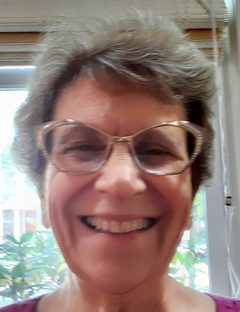 B’nai Moshe volunteer librarian Sherry Wasserman has recently self-published a children’s picture book about the oft-forgotten holiday of Shavuot, which commemorates the Israelites’ encounter with God at Mt. Sinai. I Am Standing at Mount Sinai, is told through the insightful eyes of a young girl named Sarah, and with its vivid illustrations, recounts the awesome revelation of the Ten Commandments and the Torah as well as how Shavuot is celebrated.
B’nai Moshe volunteer librarian Sherry Wasserman has recently self-published a children’s picture book about the oft-forgotten holiday of Shavuot, which commemorates the Israelites’ encounter with God at Mt. Sinai. I Am Standing at Mount Sinai, is told through the insightful eyes of a young girl named Sarah, and with its vivid illustrations, recounts the awesome revelation of the Ten Commandments and the Torah as well as how Shavuot is celebrated.
In writing the limited-edition hardcover, which includes blurbs from Rabbi Shalom Kantor and Rabbi Emeritus Elliot Pachter, Wasserman links the Biblical saga of the Exodus to the Shavuot festival, connecting Passover’s celebration of freedom with Shavuot’s emphasis on the acceptance of mitzvot, the rules for moral behavior.
 “I believe that freedom without law and rules of behavior is chaos; it leads to uncivilized behavior and yields injustice in the world. God followed the gift of freedom (Passover) with the gift of Torah (Shavuot) so that the Jewish people (and hopefully all mankind eventually) would have the rules and the tools needed to live together in harmony. The rules of moral and ethical behavior found in the Torah enable living in a just society.”
“I believe that freedom without law and rules of behavior is chaos; it leads to uncivilized behavior and yields injustice in the world. God followed the gift of freedom (Passover) with the gift of Torah (Shavuot) so that the Jewish people (and hopefully all mankind eventually) would have the rules and the tools needed to live together in harmony. The rules of moral and ethical behavior found in the Torah enable living in a just society.”
Wasserman first conceived the book, about 20 years ago while preparing to re-open the B’nai Moshe Library in its West Bloomfield home. While sorting through the collection, which was stored in less than ideal conditions after leaving Oak Park, she realized that only around half of the books were salvageable. Among those, she found no suitable children’s book about the holiday of Shavuot. After searching unsuccessfully for something to purchase, Wasserman began thinking about writing one. After considering many different ideas over a few years, she settled on a concept and began a long search for an illustrator. In the end, she need not have looked so long and far afield, for she found her illustrator, Ruthie Cisse, close to home.
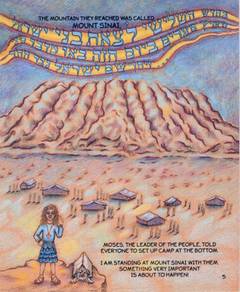 “I met her by complete accident at Kiddush after Shabbat services,” Wasserman says. Cisse, an artist in New York has family ties to B’nai Moshe, her grandmother is our member, Adelyn Greenberg. Wasserman happened to sit at the same Kiddush table with the family and started talking. Cisse had never thought about illustrating a children’s book but after she and Wasserman met the next Monday at the B’nai Moshe library and discussed the idea, Wasserman hired her. With an illustrator in hand, it was time to move her vision into high gear. Through emails and phone calls, the two worked together, sharing ideas for the illustrations. For instance, it was Cisse who thought of putting ribbons in the illustrations to hold the Hebrew verses from Exodus as well as giving Sarah a schnauzer to accompany her journey.
“I met her by complete accident at Kiddush after Shabbat services,” Wasserman says. Cisse, an artist in New York has family ties to B’nai Moshe, her grandmother is our member, Adelyn Greenberg. Wasserman happened to sit at the same Kiddush table with the family and started talking. Cisse had never thought about illustrating a children’s book but after she and Wasserman met the next Monday at the B’nai Moshe library and discussed the idea, Wasserman hired her. With an illustrator in hand, it was time to move her vision into high gear. Through emails and phone calls, the two worked together, sharing ideas for the illustrations. For instance, it was Cisse who thought of putting ribbons in the illustrations to hold the Hebrew verses from Exodus as well as giving Sarah a schnauzer to accompany her journey.
In the book, Sarah wants to share her knowledge of the importance of Shavuot and of what happened at Mt. Sinai with others. “So, I think Sarah is the teacher here” Wasserman explains. “She relates the story; she explains its importance and significance; she tells how to celebrate Shavuot and make it a part of our lives. She knows all of this and she is telling the reader, who may not know about the holiday, or why it is important and significant and so is worthy of being celebrated.”
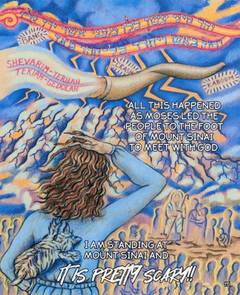 Sarah shows love for the holiday, happiness in celebrating it, and understanding and acceptance of the need to join the two concepts (personal freedom and responsible behavior in a community) into her own life. “Each year as she celebrates Shavuot, she recommits to limiting her own individual freedom by living according to the mitzvot of Torah, she recommits to living ethically and morally in order to help create a just and ordered society for all mankind.”
Sarah shows love for the holiday, happiness in celebrating it, and understanding and acceptance of the need to join the two concepts (personal freedom and responsible behavior in a community) into her own life. “Each year as she celebrates Shavuot, she recommits to limiting her own individual freedom by living according to the mitzvot of Torah, she recommits to living ethically and morally in order to help create a just and ordered society for all mankind.”
Wasserman chose a girl to tell this holiday story because women should also be seen to love and live by the Torah. Yet, says Wasserman, “Sarah is not just a little girl kid. For me, she represents every girl, every child, every person (male and female) since everyone received the gift of Torah at Mt. Sinai and, on Shavuot, we are all standing at Mt. Sinai.”
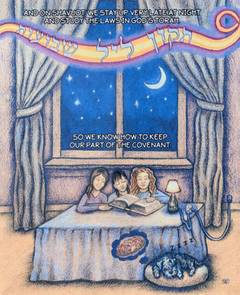 “Shavuot is the forgotten festival,” says Wasserman, who hopes I Am Standing at Mount Sinai encourages children and adults to appreciate the holiday. “It is not celebrated or talked about like Passover and Sukkot. It does not have ‘fun’ elements like a sukkah or a seder. It falls at the end of the school year and is frequently not taught at all. But it does have great moral and ethical significance for the Jewish people and is, in my opinion, worthy of a great deal more respect that it is generally given.”
“Shavuot is the forgotten festival,” says Wasserman, who hopes I Am Standing at Mount Sinai encourages children and adults to appreciate the holiday. “It is not celebrated or talked about like Passover and Sukkot. It does not have ‘fun’ elements like a sukkah or a seder. It falls at the end of the school year and is frequently not taught at all. But it does have great moral and ethical significance for the Jewish people and is, in my opinion, worthy of a great deal more respect that it is generally given.”
I Am Standing at Mount Sinai is available at Amazon for $20.
Something Old, Something New, Something Borrowed, Something Blue
07/20/2020 10:27:23 AM
Jodi Weinfeld
| Author | |
| Date Added |
Fulfilling the mitzvah of saying kaddish during COVID-19
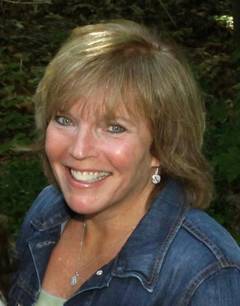
Something Old
In Rabbi Herbert Yoskowitz’s book, The Kaddish Minyan, he eloquently introduced the history and meaning of the Kaddish Prayer. This prayer, while something old, continues to connect Jews with previous generations. Below please find an excerpt from the book.
“While the Kaddish is thought to be a prayer for the dead, essentially it is an affirmation of life. Neither death nor the dead is mentioned.
Originally, Kaddish was a response recited at the close of a Rabbinic lesson in the synagogue during the Talmudic Period (200 BCE-550 CE). A message of comfort and consolation would conclude the Rabbi’s lesson. Kaddish extended that message by focusing on our messianic hope. This Kaddish is called the Rabbis’ Kaddish.
In post-Talmudic time, saying the Kaddish was extended from the House of Study to the House of Prayer and ultimately to the cemetery. The Rabbis taught that Kaddish should be recited for eleven months for a deceased parent. For other deceased relatives, there was a thirty-day obligation to say Kaddish. Today, some choose to say Kaddish for eleven months in memory not just of parents but of other relatives, too.
Kaddish, an Aramaic word for “holy” praises God’s name and must be said in public assembly, which is defined as a quorum of at least ten Jewish adults, a minyan. In addition to the Rabbi’s Kaddish, other forms of Kaddish said during a religious service include the Full Kaddish recited at the end of a service, the Half Kaddish said at the conclusion of smaller prayer units, and the Mourner’s Kaddish.
Kaddish is said subsequently by a mourner on the anniversary of the death (yahrzeit) of a loved one during all services on that day and on Yom Kuppur, Succot, Pesach and Shavuot when the Memorial Service(Yizkor) is recited. On the yahrzeit, it is customary for the mourner to receive an aliyah, an honor involving being called to the Torah and reciting Torah blessings expressing joyous sentiments. It is suggested that if the yahrzeit occurs on a non-Torah reading day, the person observing the yahrzeit should receive an aliyah(an opportunity to praise God while standing before the open Torah) in the synagogue on the Shabbat before the yahrzeit.”
Something New
For the next 11 months, this will continue to be a new way of life; a way to perpetuate the memories of my parents with honor the way so many generations before me have done. (L’dor va Dor) A “B’nai Moshe Bonus” was that I made new friends who either attended services to say Kaddish for their loved one(s) or attended services for any one of a million personal reasons.
Something new for me: saying Kaddish on Zoom. My father died January 30, 2020 and my mother died on February 9, 2020. Technically, “Pre-Covid” so attending morning minyan and evening minyan became my new existence. With Covid came our synagogue’s response to conduct services via Zoom. This technology along with the work of professional and lay leaders became a “lifeline” to continue the recitation of Kaddish for me and many others. I am grateful to all of you for your ingenuity, perseverance and commitment to our tradition which has allowed me/us to fulfill this mitzvah.
Something Borrowed
With Covid came Zoom, with Zoom came the need to borrow siddurim from the synagogue in order to follow along and participate in both the weekly and Shabbat services while at home. We found the Eastern wall in our living room, set up our tablet complete with camera and microphone in order to be part of the Gallery view during services with other congregants. Home became an even more sacred place.
Something Blue
The unique siddur we use on Shabbat, Siddur Tefillah L’Moshe has a blue cover. Ahh….something blue.
It is a reminder of the familiar, the comfortable, the connection and the continuation of tradition specific to our shul. It helped erase the unfamiliar and the uncomfortable. It reminded me that I was part of a larger, loving community, especially in this time of extreme need and desire to connect.
So, while the phrase Something Old, Something New, Something Borrowed, Something Blue is typically associated with a wedding, a simcha, it is now associated with another life cycle event for me, one that also reminds me of the simchas( happier times)…..a time of honor and love of family near and far.
*Zoom has been a good alternative to in-person services but there is no substitute for Michael Leibowitz’s delicious breakfasts. (Although I bet he doesn’t mind sleeping in).
Spotlight on Renowned Artist, Lynne Avadenka
05/26/2020 10:13:22 AM
Lynne Avadenka
| Author | |
| Date Added |
 I was looking forward to May 17 when the B'nai Moshe Sisterhood was planning to visit my studio. I’ve actually been working quite a bit in my studio since we’ve all been on lockdown, so instead of an actual visit which isn’t possible now, I’ve been invited to share some of my work with you here.
I was looking forward to May 17 when the B'nai Moshe Sisterhood was planning to visit my studio. I’ve actually been working quite a bit in my studio since we’ve all been on lockdown, so instead of an actual visit which isn’t possible now, I’ve been invited to share some of my work with you here.
But first a bit of background: I studied art, focusing on printmaking, at Wayne State University, where I received my BFA (1978) and MFA (1981). I’ve had an active studio career since then, supported by sales of my work, individual artist grants, residencies and teaching. Much, though not all, of my work is inspired by Jewish themes. If you’d like to get a larger look at my art and achievements, please check out my websites which can be found at www.lynneavadenka.com and www.signalreturnpress.org.
I’ll talk here about two recent projects: Living Under Water, a collaborative project that took me to Venice and Jerusalem, and Sacred Craft: Jewish Women in Early Hebrew Printing , a project funded by a grant from the Hadassah-Brandeis Institute, that began with research last year in the Hebraic Division of the Library of Congress in Washington DC.
In 2018 I spent three weeks in Venice, at the invitation of Beit Venezia (The Home for Jewish Culture) along with four other Jewish artists (all from Israel). Living Under Water was a project designed by Jerusalem based artist Andi Arnovitz and Shaul Bassi, the founder of Beit Venezia. The idea behind this effort was to create a body of work about the climate crisis inspired and informed by Jewish sources. We spent the first week of our residency listening to scholars, scientists, rabbis and environmentalists speaking about climate change and what Judaism has to say about it. Topics included the notion of a universal Shabbat, a day of rest all over the world (no buying, no selling, no driving, giving the planet a rest) and discussion about shmita---what would it mean for an agricultural cycle to be embraced on a global scale, as an environmental policy.
Culture) along with four other Jewish artists (all from Israel). Living Under Water was a project designed by Jerusalem based artist Andi Arnovitz and Shaul Bassi, the founder of Beit Venezia. The idea behind this effort was to create a body of work about the climate crisis inspired and informed by Jewish sources. We spent the first week of our residency listening to scholars, scientists, rabbis and environmentalists speaking about climate change and what Judaism has to say about it. Topics included the notion of a universal Shabbat, a day of rest all over the world (no buying, no selling, no driving, giving the planet a rest) and discussion about shmita---what would it mean for an agricultural cycle to be embraced on a global scale, as an environmental policy.
All the while, we were taking notes, keeping sketchbooks, and to be honest, enjoying getting to know a remarkable city and its Jewish history. We visited the ghetto numerous times, had special tours of the lagoon and MOSE project (the controversial project meant to protect Venice against rising tides), and because of kashrut considerations, spent a lot of time cooking as a group in the marvelous palazzo where we were housed. The last week of our residency we worked at Scuola di Grafica Internazionale di Grafica, a traditional print shop, creating a suite of prints as our visual responses to what we learned and experienced. Another important component of the project was a 60 page magazine of essays, poetry and visual art from the participants in the project. Meant to be used in Jewish educational settings, it is available in print as well as a digital download.
In 2019 our Living Under Water project was chosen to be exhibited at the third Jerusalem Biennale. The exhibition was housed in the Wolfson Museum, inside the Hechal Shlomo synagogue. Although Marc and I were not able to attend the opening, we spent three weeks in
Jerusalem while the show was on exhibit. I gave several impromptu tours of the show (including meeting up with Pearlena Bodzin and her husband Ephraim) and it was reviewed in the Jerusalem Post and Hadassah magazine. It was our hope that the exhibition would travel to Jewish museums across the world, but like so many other events, this possibility is now on hold. I’ve included a few of my works here, Afterword (a mixed media piece that plays on the text of the Akdamut (Forward) prayer of Shavuot, and one of my journal pages.
 Sacred Craft: Jewish Women in Early Hebrew Printing began when I was invited to contribute to an anthology of essays devoted to The Book of Exodus. I was taken with Verse 17:14, as this is the first time we see the word “book” in the Torah, as well as a commandment to write down and record events for the future. Since my work is all about the idea of the book, and since I’m a printmaker and I make artist’s books, I started reading about the history of Jewish books and the influence of the invention of printing on Jewish culture. And I started noticing in these sources the small entries about Jewish women’s involvement in the printing of Hebrew books. My grant from the Hadassah Brandeis Institute supported direct research at the Hebraic Division of the Library of Congress last May.
Sacred Craft: Jewish Women in Early Hebrew Printing began when I was invited to contribute to an anthology of essays devoted to The Book of Exodus. I was taken with Verse 17:14, as this is the first time we see the word “book” in the Torah, as well as a commandment to write down and record events for the future. Since my work is all about the idea of the book, and since I’m a printmaker and I make artist’s books, I started reading about the history of Jewish books and the influence of the invention of printing on Jewish culture. And I started noticing in these sources the small entries about Jewish women’s involvement in the printing of Hebrew books. My grant from the Hadassah Brandeis Institute supported direct research at the Hebraic Division of the Library of Congress last May.
Marc and I were in Washington, DC for a week, and had separate itineraries the entire trip. Every day he would head out to any number of historic sights, monuments and museums after walking me to the Library where I spent hours looking at the most remarkable Hebrew books, printed in the 1500s. It is fascinating that Jewish women were involved in the creation of these early books, taking over for husbands and fathers in the event of illness or death, running the business--from setting type, to printing, to selecting texts, to publishing and distribution. And how do we know this: we see these women’s names, set in type in these books.
As a result of this trip and continuing research, I’m creating a project that will be exhibited in New York, I hope, in 2021 or 2022…..more to come! And I hope the Sisterhood will get a sneak peek when we’re all able to be out and about.
To close, here are “quarantine” prints I’ve created, using wood type, stencils and color ink.


Thanks for the opportunity to share some of my work with you!
Lynne
Times of Tragedy Bring out our Very Best or Very Worst
04/14/2020 10:29:17 AM
Steven Fine
| Author | |
| Date Added |
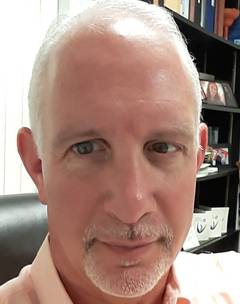 As with so many national and international tragedies we have faced in recent years, there is one constant. Tragedies either bring out the very best in people, or the very worst.
As with so many national and international tragedies we have faced in recent years, there is one constant. Tragedies either bring out the very best in people, or the very worst.
Rick Wiles, a Florida pastor, said on March 26 that God is giving the Jews the coronavirus as a divine punishment. “That is why you have a plague in your synagogues, he said.
We have seen shoppers hoarding groceries and personal items to the extent that others don’t have any. Is it necessary to have 144 rolls of toilet paper while your neighbor has none? We find anti-Jew hatemongers zoom-bombing video prayer services to spew their vitriolic epithets. And, we see people using this current tragedy to prey on the most vulnerable to try and cheat them out of money and their economic stimulus checks.
Sometimes it is difficult to look past this abhorrent behavior and see the wonderful things that people do in the face of tragedy and how much good there is in the world. However it is right here in front of our eyes.
We’ve seen people (our own Rabbi Kantor and family for one) driving by a friend or family member’s house to wish them a happy birthday. We’ve seen athletes, celebrities, and non-celebrities alike donate tens of millions of dollars to the effort. Quarantined people in Italy, Spain, France, and Israel coordinated times to applaud healthcare workers from their homes. The sounds of clapping, cheering, and whistling filled the air in expressions of gratitude for doctors, nurses, and others who are tirelessly treating the sick.
Fourth, fifth, and sixth graders in Columbus, Nebraska, made get well cards for people affected by the coronavirus. Their teacher then mailed the cards to the University of Nebraska Medical Center to be distributed to those in quarantine. Food trucks and restaurants are delivering free food to kids locked out of school lunch programs. There are so many similar stories.
Members of B’nai Moshe have stepped up, as we always do. We have collected over $1,500 in donations to provide food for medical heroes working tirelessly at Henry Ford Hospital WB. Michelle Seid and Jacqueline Goldstein have championed an effort wherein they have been providing food to many units at many hospitals with food from local restaurants, thus helping both the medical heroes and local food establishments.
People say that they can’t wait to get back to normal. I hope not. In “normal” times we don’t see nearly the generosity we see now. Let’s make these actions our ”new normal” when we don’t need a tragedy to fulfill our obligation of repairing the world. Remember, we’re not stuck at home. We’re safe at home. One word can make all the difference.
B'nai Moshe alum named on Forward 50 list of influential American Jews
01/14/2020 12:13:50 PM
B'nai Moshe
| Author | |
| Date Added |
 B'nai Moshe is proud that one of our B'nai Moshe family has landed on the Forward50 list of influential American Jews.
B'nai Moshe is proud that one of our B'nai Moshe family has landed on the Forward50 list of influential American Jews.
 Mikhl Yahsinsky, son of Debbie and Gary Yashinsky, has been named to this illustrious " machers and shakers list."
Mikhl Yahsinsky, son of Debbie and Gary Yashinsky, has been named to this illustrious " machers and shakers list."
Some other prominent names who appear on the list are: Congressman Adam Schiff, Lt. Col. Alexander Vindman, ADL Director Oren Segal, sports pundit Max Kellerman, Poway Rabbi Yisroel Goldstein, Super Bowl MVP Julian Edelman.
Fluent in seven languages, Yashinsky, 31, has directed opera, taught Spanish, written and directed plays, and performed rap in Yiddish. In 2019, he appeared as Mordkhe the Innkeeper in the Folksbiene’s smash-hit revival of “Fiddler on the Roof” in Yiddish, and now is starring in the Folksbiene’s revival of “The Sorceress.”
To read more about this "Yiddish Renaissance Man" CLICK HERE
"Welcome Home" is not just a slogan
10/30/2019 12:45:20 PM
Miranda Brooks
| Author | |
| Date Added |
Congregation B'nai Moshe always greets those visiting with "welcome home." Whether you have been a member for 50 years or may be visiting for the very first time you are welcomed home to B'nai Moshe. It doesn't even matter if your are Jewish or not. While there is a sign right above the entrance to the building that reads "Welcome Home" it is not just a slogan. It's B'nai Moshe.

B'nai Moshe's Unique Gabbai Makes Us Proud
10/02/2019 01:21:48 PM
B'nai Moshe
| Author | |
| Date Added |
If you were at B'nai Moshe on the second day of Rosh Hashanah, you may have taken notice of something we believe to be unique and it happened at B'nai Moshe. It is unique not only in metro-Detroit but we would not be going out on a limb to say in the nation.
Quite possibly, because of the inclusive family atmosphere at B'nai Moshe, you may not have even given it a second thought. And in many ways, not noticing might actually make this all the more special.
I am speaking of the gabbai on the second day of Rosh Hashanah. The job of the gabbai is a  difficult and important role. The gabbai is sort of the quarterback of the torah service. The gabbai calls up (in Hebrew) each person who is given the honor of an aliyah to the torah. There are several prayers which must be said, adding the Hebrew name of the honoree and saying a mishabeirach (prayer of good health) for the previous honoree. The words are quite different on the high holidays than they are on shabbat. It's not easy, to say the least.
difficult and important role. The gabbai is sort of the quarterback of the torah service. The gabbai calls up (in Hebrew) each person who is given the honor of an aliyah to the torah. There are several prayers which must be said, adding the Hebrew name of the honoree and saying a mishabeirach (prayer of good health) for the previous honoree. The words are quite different on the high holidays than they are on shabbat. It's not easy, to say the least.
B'nai Moshe's lead gabbai on the second day of Rosh Hashanah was Yael Plotnick. Yael is a 21-year old student at the University of Michigan and has grown up at B'nai Moshe. Even more impressive was that Yael took on this same role last year when she was but 20. Usually the role of the gabbai is given to a member of the clergy or a seasoned male ritual leader. At B'nai Moshe this role was filled beautifully by a 21-year old female and we couldn't be prouder.
We'd love to hear from any other synagogue in the country or world who can boast such a claim.
These opportunities can only exist in a synagogue that is open to change and is blind to traditional gender roles. Congratulations Yael on a job well done!
How Do You Embrace Your Jewish Identity?
09/17/2019 10:17:35 AM
B'nai Moshe
| Author | |
| Date Added |
B'nai Moshe's theme for the High Holidays and throughout the year is "How do YOU embrace YOUR Jewish Identity?" We sent out cards to our members asking them to finish the statement "I feel connected to my Judasim when I ... "

We'll have all the response cards posted for display on the High Holidays. Here are some of those that have been turned in so far. Please submit your responses by emailing I Feel Connected to My Judaism When I ... and let us know when you feel connected to your Judaism.
"When I attend services and when I eat." - age 87
"When I participate in family traditions." - age 31
"When I learn of Israel's accomplishments - humanatarian, scientific or medical." - age 75
"When I host large holiday dinners with friends and family." - age 70
"When I wake up in the morning and all through the day." - age 80
"When I light candles on Friday night." - age 66
"When I hear people speaking Hebrew in places I wouldn't expect." - age 75
"When I volunteer at Yad Ezra each week." - Age 68
Sun, November 2 2025
11 Cheshvan 5786
 .
.
Today's Calendar
| Shacharit : 9:00am |
| Mincha/Maariv : 5:00pm |
Upcoming Programs & Events
Nov 7 Musical Kabbalat Shabbat November Friday, Nov 7 5:00pm |
Nov 17 Sisterhood Book Club Monday, Nov 17 7:00pm |
Dec 3 Sisterhood Girls Night Out at Leon & Lulu Wednesday, Dec 3 4:00pm |
Dec 6 Experience Shabbat Experience! Shabbat, Dec 6 9:30am |
Dec 7 Sisterhood Mikvah Learning Sunday, Dec 7 2:00pm |
This week's Torah portion is Parshat Vayera
| Shabbat, Nov 8 |
Candle Lighting
| Friday, Nov 7, 5:02pm |
Havdalah
| Motzei Shabbat, Nov 8, 6:00pm |
-
Friday ,
NovNovember 7 , 2025Musical Kabbalat Shabbat
Friday, Nov 7th 5:00p to 8:30p
Get ready for a joyful, music-filled Kabbalat Shabbat that will lift your spirit! Sing, celebrate, and soak in the beautiful melodies as we welcome Shabbat together. -
Monday ,
NovNovember 17 , 2025Sisterhood Book Club
Monday, Nov 17th 7:00p to 8:30p
Join the Club! This month we'll be reading "The Goddess of Warsaw" by Lisa Barr -
Wednesday ,
DecDecember 3 , 2025Sisterhood Girls Night Out at Leon & Lulu
Wednesday, Dec 3rd 4:00p to 6:00p
Join Sisterhood for a fun(draising) night out shopping for the holidays and dinner! -
Saturday ,
DecDecember 6 , 2025Experience Shabbat Experience
Shabbat, Dec 6th 9:30a to 12:00p
Join us for an uplifting and joyful Shabbat Experience! -
Sunday ,
DecDecember 7 , 2025Sisterhood Mikvah Learning
Sunday, Dec 7th 2:00p to 4:00p
Join us for an inspiring afternoon exploring the beauty and meaning of mikvah, including traditional and modern uses. -
Friday ,
DecDecember 12 , 2025Musical Kabbalat Shabbat
Friday, Dec 12th 5:00p to 8:30p
Get ready for a joyful, music-filled Kabbalat Shabbat that will lift your spirit! Sing, celebrate, and soak in the beautiful melodies as we welcome Shabbat together. -
Sunday ,
DecDecember 21 , 2025Chanukah Party and a Movie
Sunday, Dec 21st 5:00p to 9:00p
Join us on the 7th night of Chanukah for dinner, community Chanukiah lighting, and a movie after! -
Sunday ,
JanJanuary 11 , 2026B'nai Moshe at the Theatre
Sunday, Jan 11th 2:00p to 4:00p
Join us at the Birmingham Village Players to see Once Upon A Mattress!
Rabbi Jonathan Sacks, z"l
Learn from the mind of one of the world's foremost Jewish thinkers.
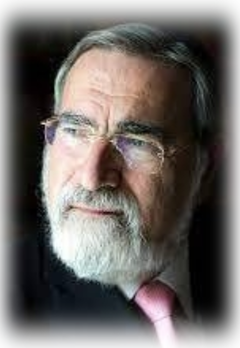
Calendar of Jewish Holidays
 Do you wonder when Purim or Pesach is? Does Rosh Hashanah come "early or late" next year? You can find the listing of all the upcoming holiday dates
Do you wonder when Purim or Pesach is? Does Rosh Hashanah come "early or late" next year? You can find the listing of all the upcoming holiday dates
Upcoming Events- JLive
Stay current on Upcoming events by clicking on: JLive
Looking for Love in all the Wrong Places?
If you are single and looking for your besheret, click on JDate - Enroll or JSwipe
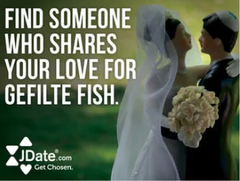
Your mother would be so
happy













